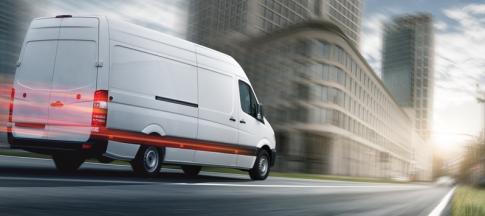
More and more people are being tempted by life on the open road. But here’s what you need to know about motorhomes to make sure you stay not only on the right side of the road, but the law too!
Who can drive a motorhome in the UK?
Whether you can drive a motorhome in the UK depends on your licence, your age and the motorhome’s maximum authorised mass (MAM), which is its weight plus the maximum load it can carry.
If you passed your driving test before January 1 1997, you can usually drive a vehicle and trailer combination with a MAM of 8,250kg.
Before doing so, it’s a good idea to check your driving licence information. Note that a limit of 3,500kg applies to drivers over the age of 70, unless they've passed a medical test or an additional test.
Drivers who passed their test on or after January 1 1997 can drive a vehicle and trailer combination with a MAM of up to 3,500kg (3.5 tonnes) with up to eight passenger seats.
Some smaller motorhomes will come under this category, but mid-size and larger motorhomes will be heavier, particularly when fully loaded.
To drive a motorhome with a MAM of between 3,500kg and 7,500kg, you need a category C1 licence.
If you passed your driving test after 1997, you might need to take an extra test to qualify for this. To drive a motorhome with a MAM of over 7,500kg, you need a category C licence.
Check out the government's guide to driving licence categories.
Driving a motorhome in the UK
Remember that the speed limit on some roads in the UK is lower for vehicles weighing more than 3,500kg, which might apply to your motorhome.
For example, the speed limit on a dual carriageway for vehicles under 3,500kg is 70mph, but for motorhomes over this weight, it’s 60mph.
The speed limit on a single carriageway for vehicles under 3,500kg is 60mph, while any vehicle over 3,500kg is restricted to 50mph.
Driving a motorhome abroad
Before driving abroad, do your research on the country you’re planning to visit.
Each will have its own laws and motoring regulations. Did you know, for example, that in France you must carry a portable breathalyser in your vehicle?
If travelling in Europe, you'll need a number plate with UK identifier or UK stickers on your motorhome.
As you’re likely to be driving on the opposite side of the road, you will need to either deflect your headlights manually or buy a European conversion kit.
You'll need to take proof of your motorhome insurance, your driving licence and other important document like your V5C certificate. Take a look at our European driving checklist for our top driving abroad safety tips.
Importing a motorhome
To import a motorhome into the UK permanently you’ll need to register it as you would with any vehicle.
There are restrictions, with a maximum length of 12m and a width of 2.55m, not including mirrors, bumpers, lamps and reflectors.
There’s no height limit but, if your motorhome is more than three metres high, a notice showing the height must be positioned in the driver’s view.
If your motorhome was manufactured in another country, you'll again have to modify the headlamps for use on UK roads, as well as make sure the speedometer displays speed in mph.
Whether the vehicle was manufactured in the UK or abroad, it still needs to comply with UK safety regulations.
Under the NCC’s certificate scheme, all motorhomes with a NCC-approved plate have been inspected to meet all UK and EU rules.
Can I carry passengers in my motorhome?
Of course, but the driver is personally liable for the safety of all passengers in a motorhome and seatbelts must be used where fitted.
Side-facing seats, whilst not illegal to transport passengers, don't accommodate seat belts easily and can actually increase the risk of injury in a frontal crash.
Seat belts must comply with the latest British or European standards and be marked accordingly with either the ‘e’, ‘E’ or BS Kitemark.
The UK government advises that seat belts are professionally installed by qualified fitters, such as at a commercial garage or by a seat belt specialist.
When travelling with children, a motorhome is subject to the same seat belt regulations as all vehicles in the UK.
A suitable child restraint must be used and these can't be fitted to side-facing seats, so you'll need forward or rear facing seats with full three-point seat belts.
Loading a motorhome
Every motorhome has its own payload - its maximum weight, including contents on board. This includes passengers, gas bottles, solar panels and leisure batteries, as well as all your holiday belongings.
The weight must be distributed safely and your motorhome will have a front and rear axle load. These can be found on your motorhome’s weight plate, which is usually located inside the cab door or under the bonnet.
You can calculate the weights by visiting a public weighbridge: your local council will be able to tell you where the nearest is and you might need to pay a small charge to use it.
Remember that if you make last minute additions, like a bike rack, this will affect the axle load and could invalidate your motorhome insurance.
Getting used to driving a motorhome and its load can take time, and it’s a good idea to take a manoeuvring course before you make any long trips.
Can I live in my motorhome?
Yes, you can live full-time in a motorhome as long as it’s fully road-legal and has a valid MOT. There are, however, restrictions on where you can park up.
Wild camping, whether in a hammock, tent or motorhome, is illegal in Wales and most of England, although is okay in many parts of Dartmoor and in Scotland.
However, some landowners will allow you to park up overnight as long as you are respectful and leave no trace. It’s always a good idea to get permission before setting up camp if possible.
Motorhome insurance
You'll need the right motorhome insurance before setting off on your adventures.
Most motorhome insurance policies will cover you for things like personal injury and will protect your belongings inside your motorhome up to a certain amount.



